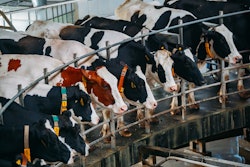
Farknot Architect | Bigstock.com
Consumer demands will affect animal protein and feed production
Consumer demands will strongly influence animal protein – and, therefore, animal feed – production in the coming year, according to Nan-Dirk Mulder, senior analyst, animal protein, at Rabobank.
Mulder presented “Global poultry and feed outlook: Key investment trends shaping the industry in 2019” at the first Feed Strategy Conference, hosted by WATT Global Media, at the International Production & Processing Expo in Atlanta on Wednesday.
Here are 14 key takeaways from his talk:
- Worldwide, there will be 35 percent more demand for animal protein in the next 20 years. Poultry will see the largest increase, about 2 percent, while expansion for eggs will be 1.6 percent; seafood, 1.2 percent; beef, 1.1 percent; and pork, 1 percent.
- Consumer demand is changing while economies develop; wealthier countries consumer more meat. Australia has the highest global per capita consumption of meat in the world.
- Social changes can affect the outlook for animal protein markets: Retail sales of meat substitutes are highest in Asia-Pacific and lowest in Latin America.
- The cost of poultry production varies significantly from region to region. The cost of live broiler production is the highest in Japan and lowest in Brazil.
- Brazil’s meat and poultry industry are seeing challenging market conditions. Brazil is very export focused, but facing trade challenges in several regions.
- There is a lot of volatility coming from Europe and the Mideast. EU chicken imports from Brazil are down 50 percent, while the EU increases imports from Ukraine.
- U.S.-China tariff battles will further shake up trade in Brazil. China imports 62 percent of the global soybean trade and is importing more soy from Brazil and Argentina.
- Outbreaks of African swine fever (ASF) in China will affect pork markets and the industry structure in the coming years. ASF is “going to have a huge impact on global markets,” Mulder said.
- Because it has been very difficult in recent years to import grandparent broiler stock into China, the demand for chicken will not be supported by enough supply.
- South and Southeast Asia will be the key global markets for growth, including Indonesia, Myanmar, the Philippines, Vietnam and India.
- Excluding Brazil, Latin America is offering some of the fastest-growing poultry markets in the world.
- Poultry markets in Africa will rise 5 percent annually in the next decade. The biggest growth will be in South Africa and Nigeria.
- Social concerns are opportunities to differentiate markets. Food safety, animal welfare, environment, consumer health and local supply are big trends.
- New technology will help to solve key supply and social challenges.
















